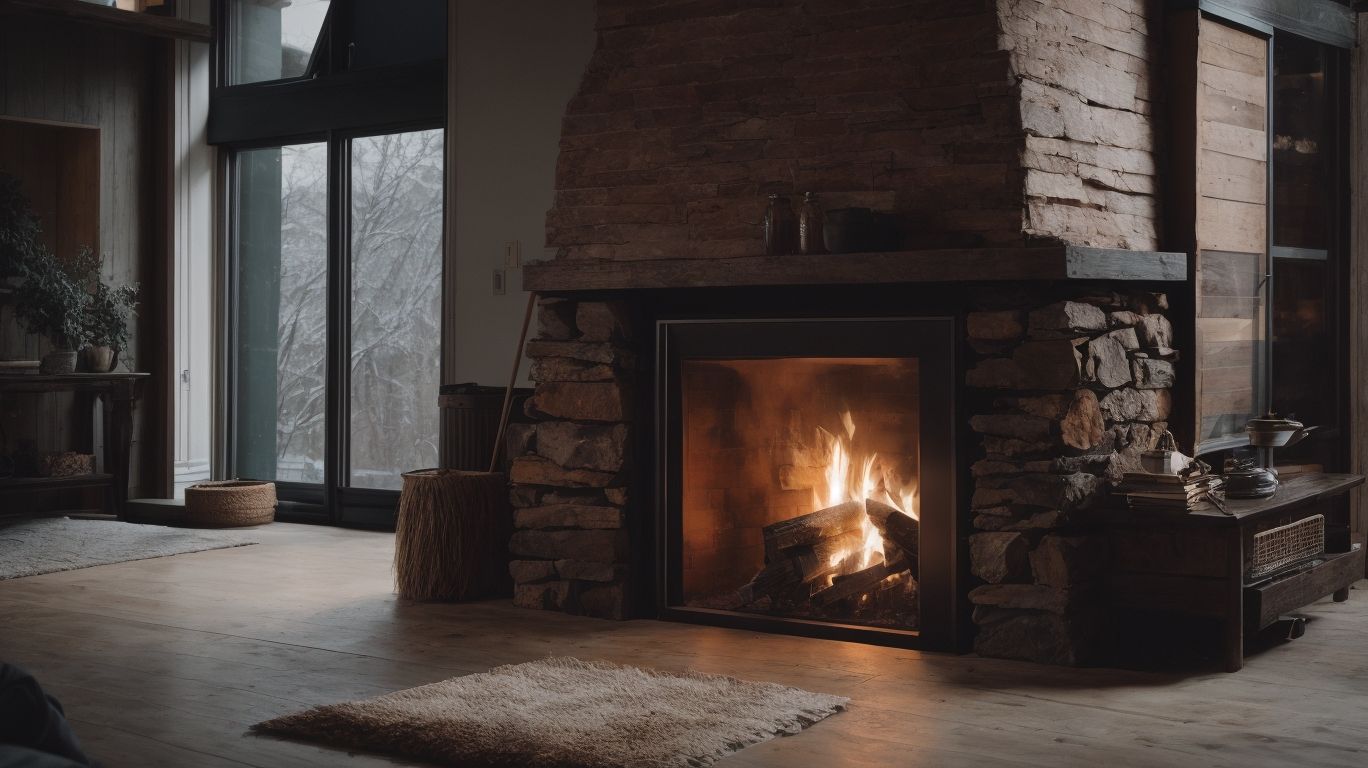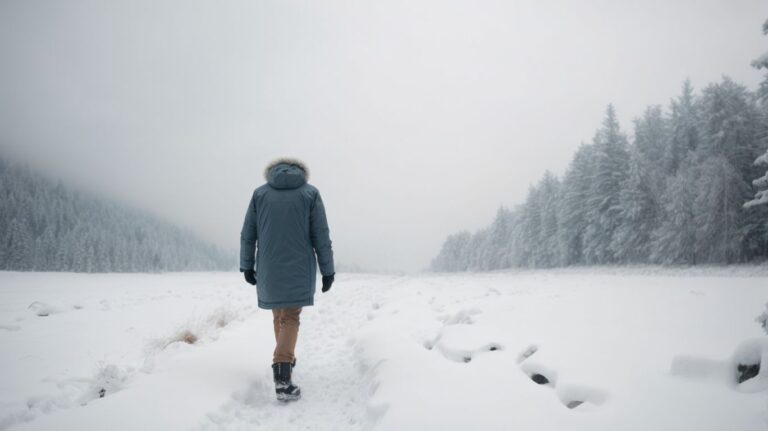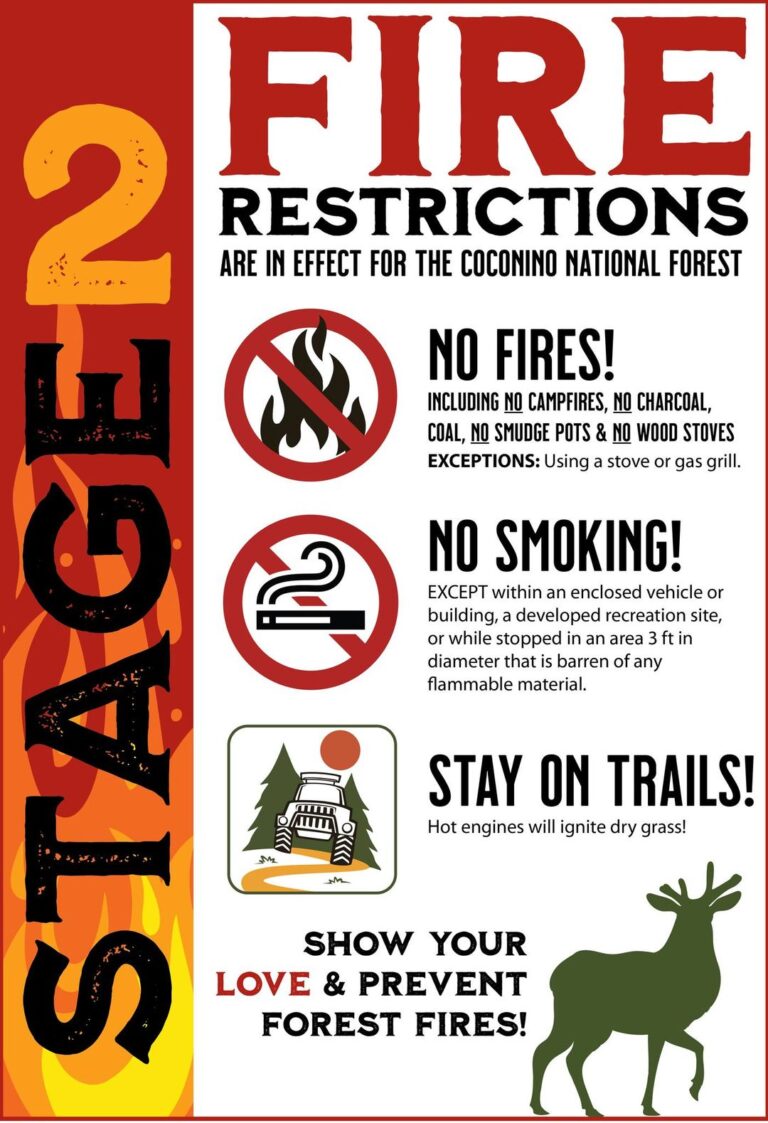How to Stop Chimney Fires During The Winter – Are you concerned about the safety of your home during the winter months? Winter brings cozy nights by the fireplace, but it also brings the risk of chimney fires. In this article, we will discuss effective ways to prevent chimney fires and keep your home and family safe. Don’t let a preventable disaster ruin your winter, read on to learn more.
What Causes Chimney Fires?
When temperatures drop and we seek warmth from our fireplaces, it is important to be aware of the potential for chimney fires. These fires can be dangerous and damaging, but they can also be prevented. In this section, we will discuss the common causes of chimney fires, including creosote buildup, improperly installed or damaged chimneys, and burning unseasoned wood.
By understanding the root causes of chimney fires, we can take necessary precautions and keep our homes and families safe during the winter season.
Creosote Buildup
- Regular inspections: It is important to schedule annual chimney inspections to detect and remove any buildup of creosote.
- Proper wood usage: Burning properly seasoned wood can help minimize the accumulation of creosote.
- Use of chimney cap: Installing a chimney cap can prevent moisture and debris from accumulating, reducing the formation of creosote.
- Appropriate cleaning: It is recommended to hire professional chimney sweeps for thorough cleaning in order to eliminate any buildup of creosote.
Improperly Installed or Damaged Chimney
- Inspect the chimney for signs of damage, such as cracks, loose bricks, or missing mortar.
- Check if the chimney is properly installed, ensuring it meets building codes and manufacturer’s specifications.
- Look for any obstructions, like animal nests or debris, and remove them to prevent potential damage.
To ensure the safety of your chimney, it is recommended to hire a professional chimney inspector for a thorough evaluation and any necessary repairs.
Burning Unseasoned Wood
- Burning unseasoned wood can be dangerous as it contains a lot of moisture, which can lead to incomplete combustion and excessive creosote buildup in the chimney.
- To prevent chimney fires caused by burning unseasoned wood:
- Only use seasoned wood with a moisture content below 20%.
- Store firewood in a dry, well-ventilated area for at least 6-12 months before use.
- It is recommended to use a moisture meter to check the wood’s moisture level before burning.
How to Prevent Chimney Fires?
Chimney fires are a common occurrence during the winter season, causing extensive damage and posing a serious safety hazard. However, with proper prevention measures, these fires can easily be avoided. In this section, we will discuss the most effective ways to prevent chimney fires. From scheduling regular inspections and cleanings to monitoring your fire, we’ll cover all the necessary steps to keep your chimney safe and functional.
Schedule Regular Chimney Inspections and Cleanings
- Schedule annual chimney inspections by a professional.
- Regularly clean the chimney to remove creosote buildup and debris.
- Repair any damages or issues identified during inspections.
- Ensure proper ventilation and functioning of the chimney.
It is important to schedule regular chimney inspections and cleanings to prevent chimney fires and ensure the safety of your home and loved ones.
Use Properly Seasoned Wood
- Seasoning: It is important to allow wood to dry for at least 6 months in order to reduce its moisture content.
- Storage: Wood should be stored off the ground and covered to protect it from rain and snow.
- Inspection: When preparing wood for burning, look for dark or cracked ends, as this indicates that the wood is dry.
- Burning: To effectively burn seasoned wood, use a well-established hot fire.
During the colonial era, the proper seasoning of wood was crucial for heating homes. Settlers would carefully prepare and store wood to ensure their comfort during the long, cold winters.
Install a Chimney Cap
Measure the dimensions of your chimney flue to ensure that the chimney cap fits properly. Be sure to purchase a durable and weather-resistant chimney cap. Install the chimney cap securely on the chimney flue to prevent debris and animals from entering. It is important to regularly inspect the chimney cap to ensure it remains in good condition and effectively performs its function.
Monitor Your Fire
- Use a fireplace screen to contain embers and sparks.
- Regularly check for excessive soot or creosote buildup.
- Ensure proper ventilation to prevent the buildup of dangerous gases.
4. Monitor Your Fire
What to Do if You Have a Chimney Fire?
Chimney fires can be a terrifying and dangerous occurrence, especially during the cold winter months. If you find yourself facing a chimney fire, it’s important to know how to handle the situation to prevent further damage and ensure the safety of yourself and your home.
In this section, we will discuss the steps to take if you have a chimney fire, including calling the fire department, closing the damper and air vents, and using a fire extinguisher or fire blanket. It’s crucial to act quickly and effectively in order to minimize the potential harm caused by a chimney fire.
Call the Fire Department Immediately
- In the event of a suspected chimney fire, it is crucial to call the fire department immediately to ensure prompt and professional assistance.
Close the Damper and Air Vents
- Shut the damper and air vents right away to restrict the flow of oxygen and contain the fire.
Use a Fire Extinguisher or Fire Blanket
- Assess the situation and make sure you are safe before attempting to use a fire extinguisher or fire blanket.
- If the fire is small and contained within the chimney, carefully use the fire extinguisher or fire blanket to smother the flames.
- Remember to aim the fire extinguisher at the base of the fire and sweep from side to side.
- After using the fire extinguisher or fire blanket, call the fire department for assistance and have professionals inspect the chimney for any damage.
In case of a chimney fire, always prioritize personal safety and promptly seek professional help.
Evacuate the House
- Remain Calm: Keep a level head to ensure a safe evacuation of the house.
- Alert Others: Warn all occupants and pets in the house immediately to evacuate.
- Exit Safely: Leave the house using the nearest and safest exit route.
- Call for Help: Dial emergency services once you have safely evacuated the house.
How to Maintain Your Chimney for Winter?
As the temperatures drop and the fireplaces start crackling, it’s important to ensure that your chimney is well-maintained for the winter season. Neglecting your chimney can lead to dangerous and costly chimney fires. In this section, we will discuss the necessary steps to take in order to maintain your chimney for winter.
From cleaning and inspecting to using a chimney liner and regularly monitoring your fire and chimney, these tips will help you prevent any potential hazards and keep your home warm and cozy all season long.
Clean the Chimney Before Winter
- Inspect: Before winter, it is important to look for any creosote buildup, blockages, or other obstructions in the chimney.
- Clean: To prepare for the colder months, use a chimney brush to remove any creosote and soot that may have accumulated.
- Repair: If there is any damage to the chimney structure or flue, it is important to address it before using the chimney during winter.
- Install: For added safety, consider installing a chimney cap or spark arrestor to prevent debris or sparks from entering the chimney.
Prioritize safety by wearing protective gear and ensuring proper ventilation while cleaning the chimney. If there is extensive cleaning or repairs needed, it is best to consult a professional chimney sweep.
Inspect for Any Damage
- Inspect the chimney structure, looking for cracks, loose bricks, or missing mortar.
- Check for any signs of water damage such as staining or mold growth.
- Examine the chimney liner for any corrosion, damage, or deterioration.
- Assess the chimney flashing and chimney cap for any wear, rust, or damage.
Use a Chimney Liner
- Protect the Chimney: A chimney liner is essential for protecting the interior of the chimney from the heat and corrosion caused by combustion gases.
- Improve Efficiency: It plays a crucial role in optimizing the draft of the chimney, which ultimately enhances the efficiency of the heating system.
- Ensure Safety: By preventing combustible materials from being exposed to high temperatures, a chimney liner significantly reduces the risk of chimney fires.
- Regulatory Compliance: In some cases, installing a chimney liner is required to comply with building codes and standards.
Monitor Your Fire and Chimney Regularly
- Regular Inspection: Make sure to schedule routine checks for creosote buildup, chimney damage, and blockages.
- Fire Monitoring: It’s important to keep an eye on your fire’s behavior, taking note of any unusual smoke, sparks, or odors.
- Chimney Maintenance: Before winter arrives, be sure to clean your chimney, check for any damage, and consider using a chimney liner for added protection.
Fact: By regularly monitoring your fire and chimney, you can significantly reduce the risk of chimney fires during the winter months.
Frequently Asked Questions
How to prevent chimney fires during the winter?
Chimney fires are a common hazard during the winter months. Follow these steps to prevent them from happening:
- Regularly clean and inspect your chimney and flue. Debris and buildup can increase the risk of a fire.
- Use seasoned firewood that has been properly dried for at least 6 months. Wet or green wood can create more creosote buildup and increase the risk of a fire.
- Do not overload your fireplace or wood-burning stove with too much wood. This can cause an intense fire that can damage your chimney.
- Never leave a fire unattended and always make sure it is completely extinguished before going to bed or leaving your home.
- Install a chimney cap or spark arrestor to prevent debris and sparks from escaping and potentially starting a fire.
- Consider hiring a professional chimney sweep to inspect and clean your chimney annually.
What is creosote and how does it contribute to chimney fires?
Creosote is a sticky, flammable substance that can build up in your chimney from burning wood. As it accumulates, it can block the flue and increase the risk of a fire. Regular cleaning and maintenance can help prevent creosote buildup.
Can I use artificial logs or other fire starters in my fireplace?
It is not recommended to use artificial logs or other fire starters in your fireplace. These products can produce more creosote buildup and increase the risk of a fire. Stick to using properly seasoned firewood.
What should I do if a chimney fire does occur?
If you suspect a chimney fire, immediately call the fire department and evacuate your home. Do not attempt to put out the fire yourself as it can be extremely dangerous. Once the fire department has extinguished the fire, have a professional chimney sweep inspect and clean your chimney before using it again.
Is it safe to use my fireplace during a winter storm or power outage?
No, it is not recommended to use your fireplace during a winter storm or power outage. Falling debris or sparks can ignite surrounding objects and cause a fire. It is best to wait until the storm passes and power is restored before using your fireplace.
How can I make sure my chimney is safe before using it in the winter?
Before using your chimney in the winter, make sure to have it inspected and cleaned by a professional chimney sweep. They will be able to identify any potential hazards and ensure your chimney is in good working condition.







